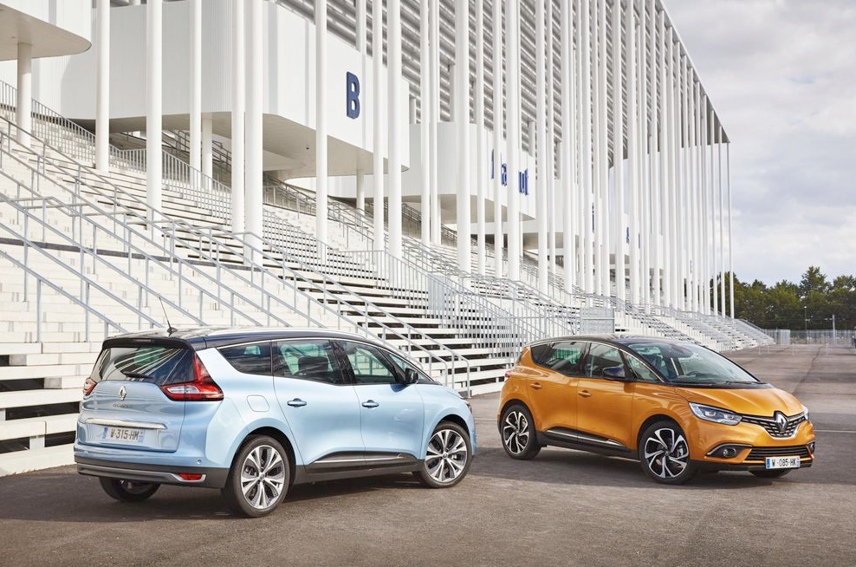Review
Renault UK’s revitalised fleet department will be in “conquest mode” when it launches the next version of the Grand Scenic multi-purpose vehicle in November.
Boasting a unique design that blends MPV functionality with the appearance of an SUV, the fourth generation model is being launched to take advantage of a fresh trend in C-segment motoring and is set to shake up the market, claims Mark Dickens, head of fleet sales operations.
“This sector is worth 50% of the UK car market and competition is keen with a constant flow of new products in a field where the dynamics are constantly changing. Last year, demand for compact SUV models was on the increase while interest in MPV products was softening, but the situation is changing again and we believe that if you’re able to offer an MPV with the characteristics of an SUV, you can only win,” he told Fleet News.
Speaking as the new car was being previewed in France, he said: “We are coming to the fleet sector with a vehicle we created in the first place and one that now has a fresh twist. It’s a brand new design that looks terrific – this is good news for us and we’re definitely in conquest mode against our rivals.”
Reconstituted in 2014, the French brand’s British fleet operation will be concentrating its efforts on user-chooser motorists with the new range and is expecting the more spacious version to account for 60 per cent of core fleet Scenic registrations over the next 12 months.
“We have followed a retail proposition with this car over the past two years and have resisted the temptation to offer huge discounts to fleets on runout supplies to avoid landing ourselves with a residuals problem. But, going forward, we can use the style of the new range as our USP to build on the success achieved by the new Megane and Kadjar models as we work to lift our market share from its current level of 4%,” said Dickens.
Unusual in being almost identical to a concept model unveiled at the Geneva motor show five years ago, the Scenic stands on the biggest set of wheels yet fitted as standard on a C-sector people carrier and gives the car a stand-out appearance. The striking alloys boast 20-inch rims but officials are keen to reassure customers that, despite their dramatic looks, the wheels are no wider than the traditional 17-inch alloys fitted to the outgoing Scenic and replacement tyres will involve no extra cost.
Longer and wider than its predecessor, the new model has a more steeply raked windscreen to help improve side vision, more efficient brakes and added versatility from folding seats that can be operated from switches inside the boot or from the dashboard. Underfloor and numerous other compartments offer 63 litres of oddments stowage and with its two rearmost seatbacks folded flat, the Grand Scenic has 596 litres of luggage space.
Active emergency braking, lane-keeping assist and driver fatigue alert are standard across the range and the top-line Signature Nav adds head-up display, rear parking camera, fixed panoramic glass sunroof, cornering front fog lights, LED headlamps, electric front seats and leather upholstery to a comprehensive specification list on Expression+, Dynamique Nav and Dynamique S Nav trim levels that include auto control of air conditioning, lights and wipers, hill start assist, a seven-inch touchscreen, selective driving modes and ambient lighting.
Slim A-pillars help reduce blind spots and a high seating position allows good visibility in a car that handles well for its size and blends secure roadholding with a compliant ride. Luxury trim provides long-distance comfort and the six-speed dual clutch transmission is well suited to the latest dCi engine, which is powerful, smooth and a subdued mile-muncher.
Prices are likely to start at less than £20,000 and the dCi 110 Dynamique Nav, costing £1,500 more than the entry-level car, is expected to be the most popular.
Both the Scenic and Grand Scenic will offer best in class emissions of 92g/km when hybrid assist technology becomes available in spring. Expected to cost £1,000 more than the standard 1.5-litre diesel, the mild hybrid versions should represent an attractive proposition to fleets, believes product manager Mike Willis.
“With strong styling and high practicality, our new car represents a stronger challenge in the sector. Linking this technology with diesel power gives another distinct advantage. It’s a no-compromise solution and we’re confident lower BIK banding will generate a lot of interest,” he said.
A 48-volt battery powers an electric motor to add an extra 15Nm torque to the popular 110 engine during acceleration and it’s charged during braking and deceleration. Though not able to provide zero emissions travel, the maintenance-free and independent operating 10kW motor is claimed to cut fuel consumption by up to 10% to lift average economy to 80mpg.
















